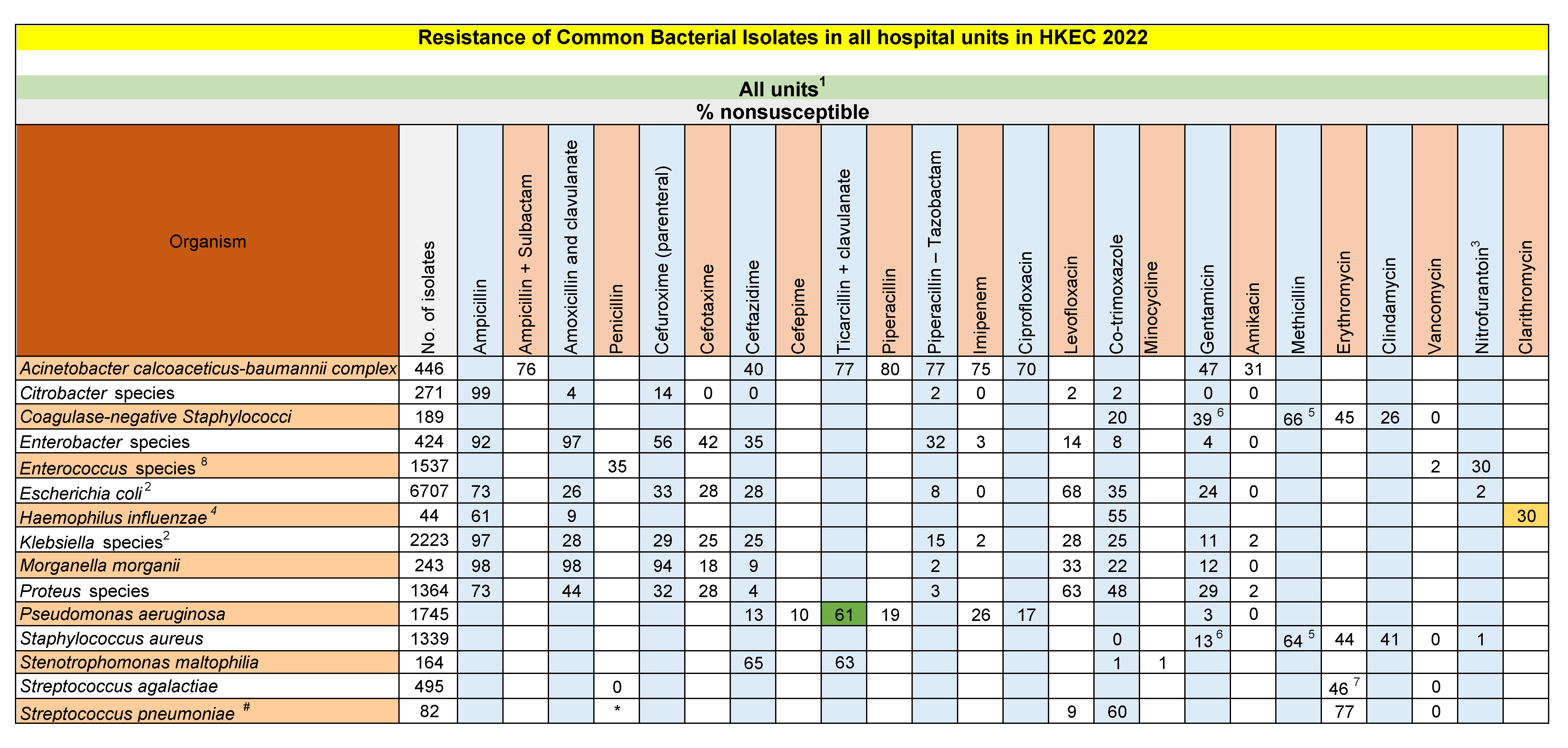Hong Kong East Cluster
Table HKE-1. Antibiogram for common bacterial isolates, Hong Kong East Cluster Hospitals, 2022

- Non-duplicate isolates from blood, urine, and respiratory specimens. Interpreted according to CLSI. Nonsusceptible includes both intermediate and resistant.
- Overall prevalence of extended-spectrum beta-lactamases (ESBL) was 26% for E. coli and 15% for Klebsiella species.
NB: For severe infection caused by ESBL-producing organisms, ertapenem, imipenem and meropenem are drug of choice for treatment - Nitrofurantoin: Susceptibility rate for urine isolates only.
- Non-duplicate isolates from respiratory specimens only.
- Methicillin-resistant staphylococci are resistant to all available beta-lactam antibiotics in PYNEH drug formulary, except ceftaroline.
- Gentamicin is used only in combination with other active agents that test susceptible for staphylococcal infections.
- Test performed on non-urine isolates only.
- Enterococcus species: In general, susceptibility to penicillin can be used to predict susceptibility to these antibiotics: ampicillin, amoxicillin (Amoxil), ampicillin-sulbactam (Unasyn), amoxicillin-clavulanate (Augmentin),and piperacillin-tazobactam (Tazocin).
-
, indicate 10% or more reduction in non-susceptible rate compared to 2021.
, indicate 10% or more increase in non-susceptible rate compared to 2021.
* At meningitis MIC breakpoints, 37% were penicillin-susceptible and 63% were penicillin-resistant. At non-meningitis MIC breakpoints, 64% were penicillin-susceptible, 26% were penicillin-intermediate and 10% were penicillin-resistant. In S. pneumoniae, resistance to azithromycin & clarithromycin can be predicted by testing erythromycin.
# The annual number of isolates is small. Data from 2021 to 2022 were combined for the calculation.